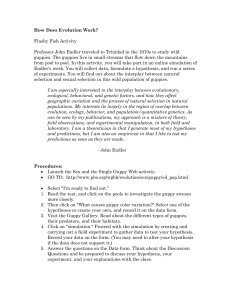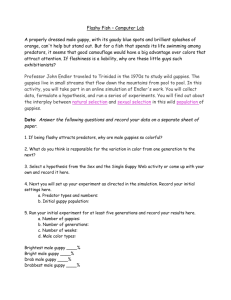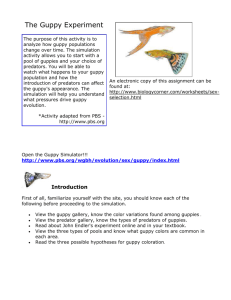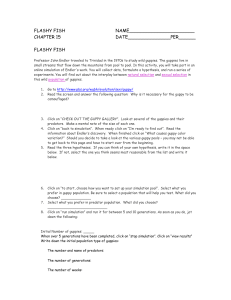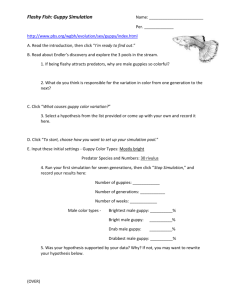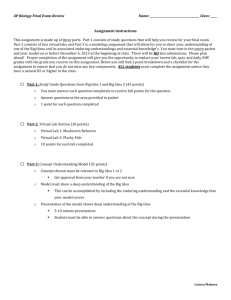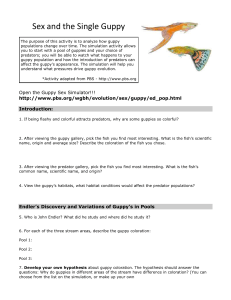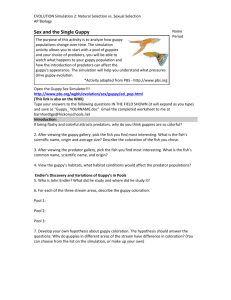“Sex and the Single Guppy”
advertisement
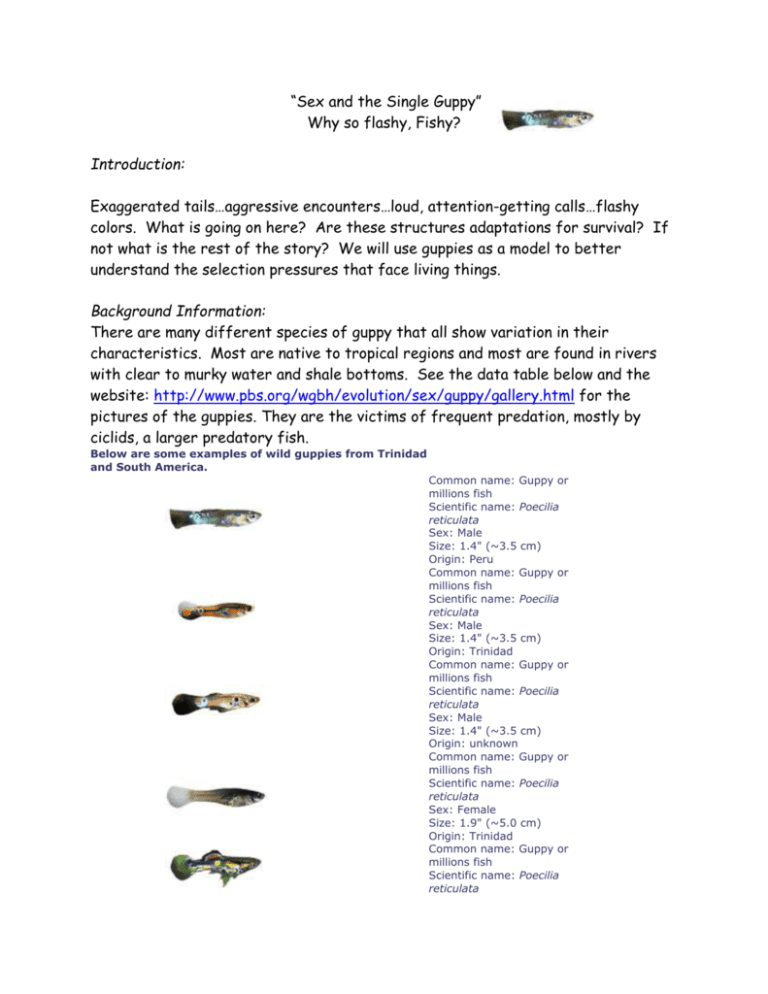
“Sex and the Single Guppy” Why so flashy, Fishy? Introduction: Exaggerated tails…aggressive encounters…loud, attention-getting calls…flashy colors. What is going on here? Are these structures adaptations for survival? If not what is the rest of the story? We will use guppies as a model to better understand the selection pressures that face living things. Background Information: There are many different species of guppy that all show variation in their characteristics. Most are native to tropical regions and most are found in rivers with clear to murky water and shale bottoms. See the data table below and the website: http://www.pbs.org/wgbh/evolution/sex/guppy/gallery.html for the pictures of the guppies. They are the victims of frequent predation, mostly by ciclids, a larger predatory fish. Below are some examples of wild guppies from Trinidad and South America. Common name: Guppy or millions fish Scientific name: Poecilia reticulata Sex: Male Size: 1.4" (~3.5 cm) Origin: Peru Common name: Guppy or millions fish Scientific name: Poecilia reticulata Sex: Male Size: 1.4" (~3.5 cm) Origin: Trinidad Common name: Guppy or millions fish Scientific name: Poecilia reticulata Sex: Male Size: 1.4" (~3.5 cm) Origin: unknown Common name: Guppy or millions fish Scientific name: Poecilia reticulata Sex: Female Size: 1.9" (~5.0 cm) Origin: Trinidad Common name: Guppy or millions fish Scientific name: Poecilia reticulata Initial Observations: In your journal, answer the following questions about the guppies. 1. What are some similarities and differences in the guppies? 2. What types of environments to these guppies live in? 3. Based on what you know about natural selection, are these colors adaptations in the environments the guppies live in? Why? Experimentation time: A properly dressed male guppy, with its gaudy blue spots and brilliant splashes of orange, can't help but stand out. But for a fish that spends its life swimming among predators, it seems that good camouflage would have a big advantage over colors that attract attention. If flashiness is a liability, why are these little guys such exhibitionists? Are they at risk for predators? Design an experiment to determine the effect of the guppies’ coloration on their survival and reproduction. Record your experimental design in your journal: 1. Question: 2. Hypothesis: 3. Methods: a. How would you set up the experiment? b. What types of data would you collect? c. What would your dependent variable be? d. What would your independent variable be? Data Time: Obtain a copy of the “Guppy Predation Data” from your teacher. Make at least 3 observations about the graph. Conclusion: Based on your data, what can you conclude about the effect of coloration on male guppy survival? What does this tell you about the adaptiveness of color in male guppies? What are some other possible reasons for guppies being brightly colored? How would you determine if those other explanations were accurate? Time for More Data… Obtain a copy of the “Guppy Reproductive Success” graphs from your teacher. Make at least 3 observations about the graphs. A New Conclusion: Based on these new data, what can you conclude about the effect of coloration on male guppy reproduction? What does this tell you about the adaptiveness of color in male guppies? In other words what is its function? Analysis to Tie it All Together: 1. Charles Darwin wrote: “[Sexual selection] depends, not on a struggle for existence in relation to other…beings or to the external conditions, but on a struggle between the individuals of one sex, generally males, for the possession of the other sex. The result is not death to the unsuccessful competitor, but few or no offspring.” How does that quote apply to the guppies? To the other animals you saw at the beginning of class? 2. How is sexual selection similar to natural selection? How is it different?

